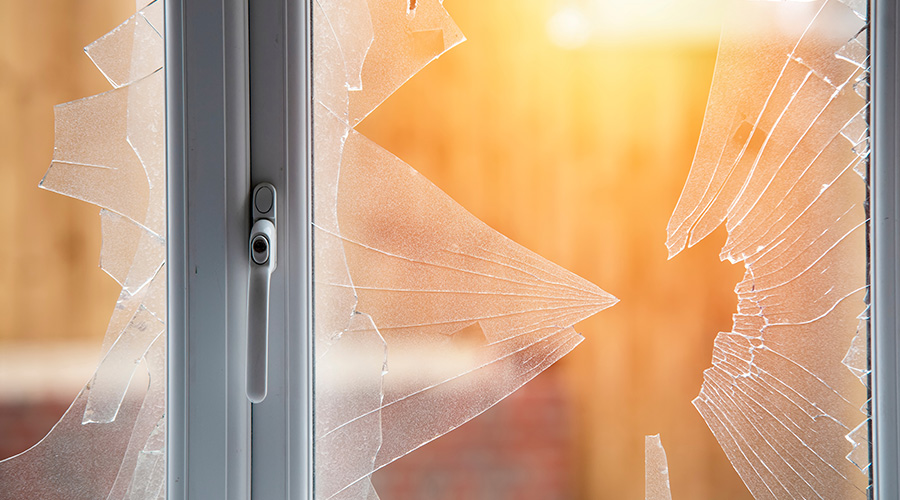
Department of Energy Selects Projects to Decarbonize Buildings
The U.S. Department of Energy will dish out $38.8 million to 25 projects to research practices aimed at decarbonizing buildings. October 14, 2024
The U.S. Department of Energy (DOE) announced selections for $38.8 million in funding for 25 projects to research and develop high impact building technologies and practices aimed at decarbonizing, reducing peak demand on the electric grid, enhancing resilience and lowering energy costs.
Advancements made with this funding support applied research, development and demonstration activities for high-priority building technologies, including next-generation retrofits for building envelope, lighting and HVAC. The funding will also support technologies that enhance the resilience of buildings during extreme weather events and allow them to function as assets to the electrical grid
The projects selected support deep decarbonization of the U.S. building stock and will equitably benefit building owners and occupants across all building types, sectors and geographies. In addition to helping meeting decarbonization goals, the products and practiced developed through the funding will save consumers money on their energy bills and building technology purchases.
The projects include:
Syracuse University (Syracuse, New York) – “Hydronic Shell: A Minimally Invasive Facade-Integrated HVAC for High Efficiency and Decarbonized Retrofitting.” Syracuse University Center of Excellence in Environmental and Energy Systems, Hydronic Shell Technologies, and Cycle Retrotech will collaborate to develop and demonstrate the innovative patented Hydronic Shell (HS) retrofit solution. The HydroBox addresses challenges of building retrofits by delivering heating, cooling, and ventilation through hydronic piping and ventilation ductwork, efficiently integrated into a building's facade with minimal disruption to tenants.
University of Wisconsin-Madison (Madison, Wisconsin) – “Cold Climate Cascade Heat Pump: A Drop-in Replacement for a Hydronic Boiler.” This project will develop a market-ready heat pump that can directly replace a natural gas boiler in buildings with hydronic heating systems with minimal changes to building infrastructure.
Ecotope (Seattle, Washington) – “Decarbonization and Electrification with Advanced Replacement Boilers (DECARB).” Ecotope will demonstrate the viability of a simple plug-and-play approach to replacing commercial fossil fuel boilers with electric heat pumps using propane and carbon dioxide (CO2) refrigerants. The project will demonstrate the replacement of fossil fuel boilers in two LMI affordable multifamily buildings. These packaged or “monoblock” air-to-water heat pumps provide heating, cooling, and service hot water from a single fully packaged product utilizing a single electrical circuit.
RenewABILITY Energy Inc. (Hazleton, Pennsylvania) – “Central Commercial Boiler Replacement with Heat Pump Water Heaters and Horizontal Drain Water Heat Recovery.” RenewABILITY Energy will assist, enable, and prove that it is cost-effective to use a building’s drain water – via a passive drain water heat recovery system – as the heat source and/or heat sink with water source heat pumps. The benefit will include a direct reduction in, or elimination of, fossil fuel usage for space conditioning and water heating.
NETenergy (Chicago, Illinois) – “High-Efficiency Closed-Loop Hybrid Heat Pump-Thermal Energy Storage.” NETenergy seeks to develop, model, validate, and test a high-efficiency closed-loop hybrid CO2 heat pump-thermochemical system that can replace existing gas boilers without replacing the existing hydronic distribution system. The proposed concept avoids costly replacement of hydronic distribution systems and offers manufacturers a drop-in replacement for the central gas boiler system in multifamily, commercial buildings, and district systems.
Purdue University (West Lafayette, Indiana) – “An Active Membrane Energy Exchanger-Integrated Dedicated Outdoor Air System for Improved Energy Efficiency and Indoor Air Quality.” Purdue University will lead the design and build for a dedicated outdoor air system using a refrigerant with ultra-low global-warming potential (GWP) and active membrane dehumidification.
University of Florida (Gainesville, Florida) – “Scaleup and Field Demonstration of Desiccant Dehumidification System for Separate Sensible and Latent Cooling.” The University of Florida is leading the scaleup and demonstration testing of a high-efficiency dehumidification technology that minimizes reheating through incorporation of a separate sensible and latent cooling system. This technology seeks to dehumidify large industrial and commercial settings, especially hospitals, to reduce energy usage and in turn, operating costs.
Transaera Inc. (Somerville, Massachusetts) – “Evaluation of Novel Desiccant Coatings in High-Efficiency Portable Air Conditioners.” Transaera is designing, developing, and testing a portable air conditioner that uses novel desiccant coatings. The application of this technology can as much as double system efficiencies. An additional goal is to reduce manufacturing costs to realize a 25% reduction in equipment first cost compared to current portable air conditioning units.
GTI Energy (Des Plaines, Illinois) – “High-Efficiency, Oil Free Compressor/Expander for CO2 Heat Pumps.” GTI Energy is designing and developing a novel oil-free CO2 compressor/expander. The success of the project can significantly advance CO2 heat pump technology and in turn, improve market adoption of natural refrigerant equipment.
Effecterra Inc. (Reno, Nevada) – “CO2 Heat Pump POC Development.” Effecterra will build a working proof-of-concept 25-ton commercial roof top unit (RTU) heat pump that uses a CO2 refrigerant. This demonstration highlights the market application potential for ultra-low global warming CO2 refrigerants in RTU heat pumps, which can exceed the performance operation of the current best-in-class commercially available equipment.
Evari Inc. (Peterborough, New Hampshire) – “Low-Cost Miniature Turbocompressors for Natural Refrigerant Heat Pumps.” Evari will develop commercially viable and cost-effective residential cold climate heat pumps that use propane as its working fluid. This project uses novel microturbine compressor technology that yields a coefficient of performance twice that of the current best-in-class products in the coldest conditions.
Harvest Thermal Inc. (Kensington, California) – “Overcoming Cost and Function Barriers for the Widespread Commercialization of High-Efficiency CO2 Heat Pumps for Residential Applications.” Harvest Thermal is developing a market-ready integrated packaged CO2 refrigerant heat pump system that provides a high-performance combined heating and hot water system at a lower cost.
Air-Conditioning, Heating and Refrigeration Technology Institute (AHRI) (Arlington, Virginia) – “Air-to-Water Heat Pump (ATWHP) Technology Implementation: Establishing Performance and Safety Measures.” This collaboration between Oak Ridge National Laboratory, AHRI, and the University of Maryland College Park will address performance and safety concerns for implementing heat pumps in the U.S. market that use flammable refrigerants. This project will support the advancement of ultra-low global warming potential refrigerants by identifying technical requirements to resolve code and other potential deployment barriers for next-generation heat pumps.
Champaign County Regional Planning Commission (Champaign, Illinois) – “COBotics for Attic Technical Testing and Infiltration Control (COBATTIC).” The Champaign County Regional Planning Commission in partnership with GTI Energy, Hearth Labs, FLX Solutions, and the Community and Economic Development Association of Cook County will develop, evaluate, and train a collaborative robotic (cobotic) and artificial intelligence-enhanced thermal diagnostic system to identify moisture damage and air leakage locations in attic spaces. Advantages of the tool include increasing the quality of weatherization and retrofitting for low-income communities, improving occupational safety and capacity of weatherization crews, and improving energy efficiency while reducing home retrofit costs.
University of Central Florida (Orlando, Florida) – “Improving Energy Efficiency and Moisture Control Using Lower-Cost Construction Methods to Unvent Attics in Hot Humid Climates.” Led by the University of Central Florida in partnership with Florida Solar Energy Center, Owens Corning, and St. Johns Housing Partnership, this project aims to simplify and reduce costs for attic retrofits by demonstrating and validating the concept of burying ducts with blown-in insulation while converting the attic from a vented to unvented (sealed) attic without the need for more costly spray foam in hot-humid climates. This proposal uses simple, low-cost construction methods leveraging existing workforce training and practices common in today’s weatherization programs, therefore increasing the likelihood of scalability, pending acceptable moisture durability control. This will significantly increase the energy efficiency of the attic and improve the livability and safety for occupants, particularly during extreme heat events.
The Curators of the University of Missouri (Columbia, Missouri) – “Low-Cost, Durable, and Resistance Radiative Cooling Roof for Enhanced Energy Efficiency of Low- and Medium-Income Houses.” Led by the University of Missouri and Texas A&M University, in partnership with the National Renewable Energy Laboratory (NREL) and Central Missouri Community Actions Program, this project aims to develop a low-cost, passive cooling film for roof retrofits to improve energy efficiency of residential buildings, especially for LMI homes. The sub-ambient radiative cooling film can help keep roof temperatures at or below ambient temperature, therefore reducing attic temperatures and saving money on cooling costs. The project leverages roll-to-roll manufacturing processes for low-cost and scalable applications. Enhanced durability and weather resistance enables the film to protect the roof structures from air, water, and moisture infiltration.
The University of Texas at Austin (Austin, Texas) – “Scalable Passive Radiative Cooling Roofing Systems for Manufactured Home Retrofitting.” The University of Texas at Austin will partner with PC Krause and Associates, Oak Ridge National Laboratory, Austin Energy, and The Other Ones to develop an affordable roof covering system that significantly reduces heat gains through the roof structure by using materials and films with passive radiative cooling (PRC) properties. The team will develop technologies to retrofit old, poorly insulated houses through two novel approaches: 1) a self-adhesive PRC film for application on degraded/rusted roofs, and 2) a retractable PRC canvas for shingle roof installation and versatile seasonal deployment. The deployment of these technologies will result in a reduction in residential energy consumption by providing an innovative passive cooling solution that minimizes reliance on traditional air conditioning with enhanced resilience to heatwaves.
Stepwise Electric Inc. (Buffalo, New York) – “Low Wires and Modular Electric Service Upgrade.” Stepwise Electric will extend its product line for electric vehicle charging to heat pumps and heat pump water heaters. Their product is a modular electrical component that installs between the electrical panel and the end use while monitoring whole-building power draw to ensure coincident electrical loads do not exceed the service capacity of the building. In this way, the product line will advance building and vehicle electrification access by avoiding costly, time-consuming replacements of electrical panels or the need for utility service capacity increases.
Slipstream Group Inc. (Madison, Wisconsin) – “Full Electrification of Affordable Multifamily Housing Units with 60-amp Load Centers using Smart Panels and Power Efficient Appliances.” Slipstream, in partnership with Span and Redwood Energy, will validate low-power electrification solutions for 100 multifamily, low-income housing units in 12 buildings. The team will showcase the use of smart electrical panels to fully electrify apartment units with fixed 60-amp service. By monitoring power draw and employing logical prioritization of loads at the circuit level, the project will seek to provide first-of-its-kind data on this scalable, low-power electrification solution with minimal impact to building occupants.
Siemens Corporation (Princeton, New Jersey) – “Green Guardians: Bolstering Resilience with Decarbonized Fire Stations.” Siemens, in partnership with NREL, will develop a blueprint for retrofitting aging fire stations with behind-the-meter DC power distribution. The upgraded power distribution will put HVAC, lighting, and plug loads on the same DC-power backbone as on-site solar and battery storage, leading to enhanced resilience and decarbonization. The blueprint will then be implemented at a fire station in Kingston, New York, in partnership with New York State Energy Research and Development Authority.
Colorado School of Mines (Golden, Colorado) – “Window Fan Energy Storage System (WiFESS) for Thermal Resilience.” The Colorado School of Mines in partnership with the Metropolitan State University Denver (MSU Denver), EcoSnap LLC, Latinas Community Connections Services LLC, and Armstrong World Industries will develop and evaluate an affordable, portable, easy-to-install window fan energy storage system. The system will focus on improving thermal resilience of low-income households by maintaining indoor thermal comfort during extreme heatwaves and power outages.
The University of Central Florida (Orlando, Florida) – “Mitigating Extreme Heat Events in Hot Humid Climates.” The University of Central Florida, in partnership with Transaera and Southeast Energy Efficiency Alliance, will develop and demonstrate an affordable, energy-efficient, portable cooler to maintain indoor thermal comfort and survivability during extreme heatwaves. The portable cooler will use novel heat exchangers with solid desiccant coatings to dehumidify the air quickly, thereby improving cooling efficiency by 44% compared to the industry standard portable air conditioners. Coupling the cooler with energy storage will enable the system to operate without assistance from the grid for at least 24 hours and reduce energy needs of LMI households.
Biological Innovations and Optimization Systems, LLC. (BIOS) (San Diego, California) – “High-Efficacy Luminaire Platform Combining Visual and Wellness Application Efficiency.” BIOS, in partnership with Lumileds, will develop a commercial lighting retrofit for troffers specifically designed to provide healthy, beneficial lighting with reduced energy requirements. The spectral makeup of the luminaire will be tailored to positively impact mood, alertness, homeostasis, and other physiological factors in humans that lighting is known to help regulate. By utilizing a novel phosphor chemistry targeting spectral enhancement at appropriate wavelengths, the BIOS luminaire will allow designers to meet stringent healthy buildings standards at minimal energy cost.
RTI International (Durham, North Carolina) – “Sustainable, High-Efficacy, Commercial Lighting Fixtures with Materials Transparency.” RTI International will improve optical design and phosphor performance of commercial lighting fixtures. The innovations under this work have the potential to achieve unprecedented efficiency targets without increasing glare or other negative lighting qualities.
LUXTECH, LLC. (Philadelphia, Pennsylvania) – “Low-Cost Sustainable Lighting Retrofit Solutions.” LUXTECH will incorporate recycled, local timber in place of metal or plastic for luminaire housing materials, reducing the lifecycle emissions impact of lighting retrofits by using more sustainable materials. These novel linear luminaires will allow buildings with troffers to retrofit without a full fixture replacement, making lighting upgrades more feasible for buildings still using less efficient linear fluorescent lights.
Next
Read next on FacilitiesNet












